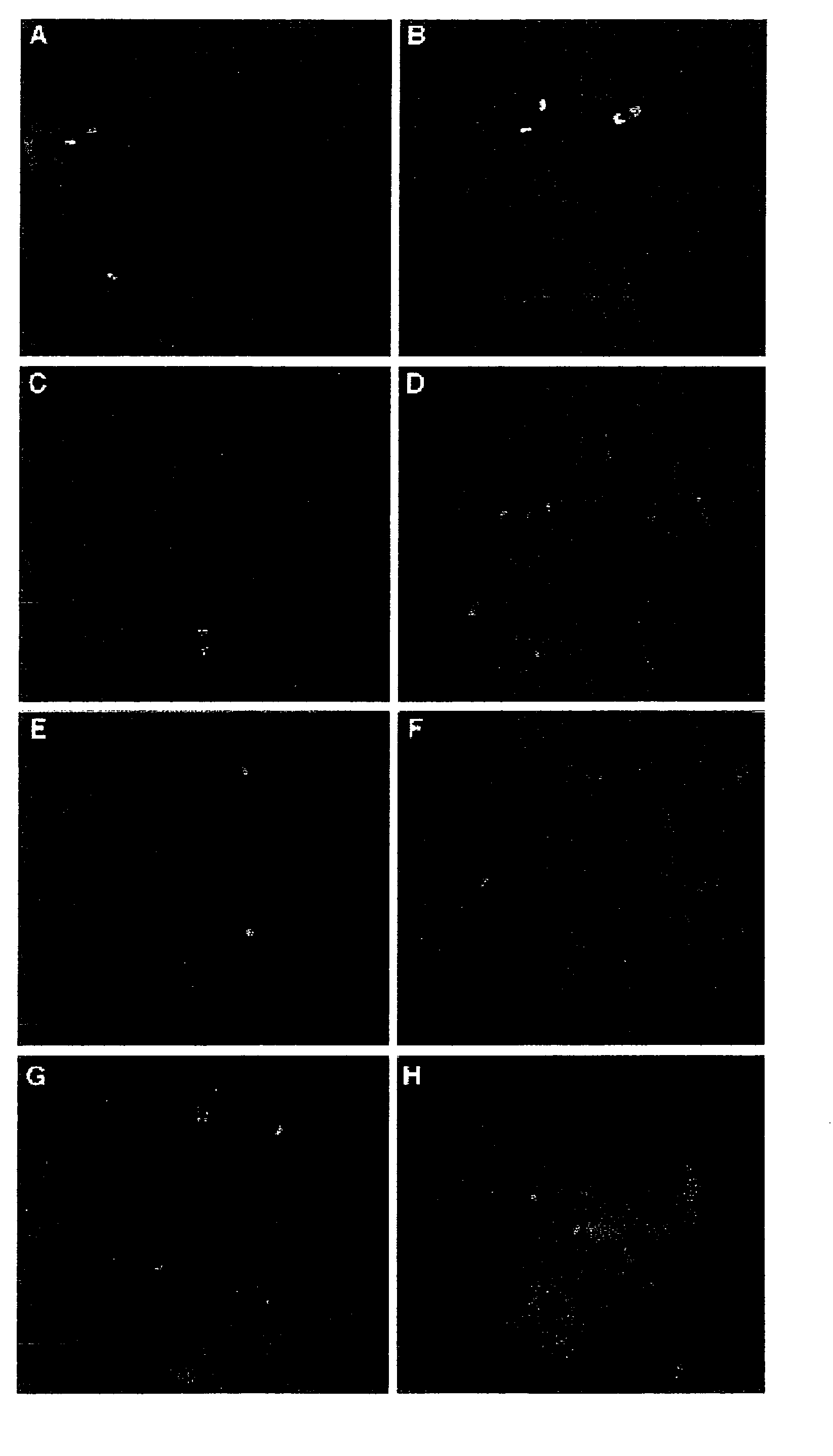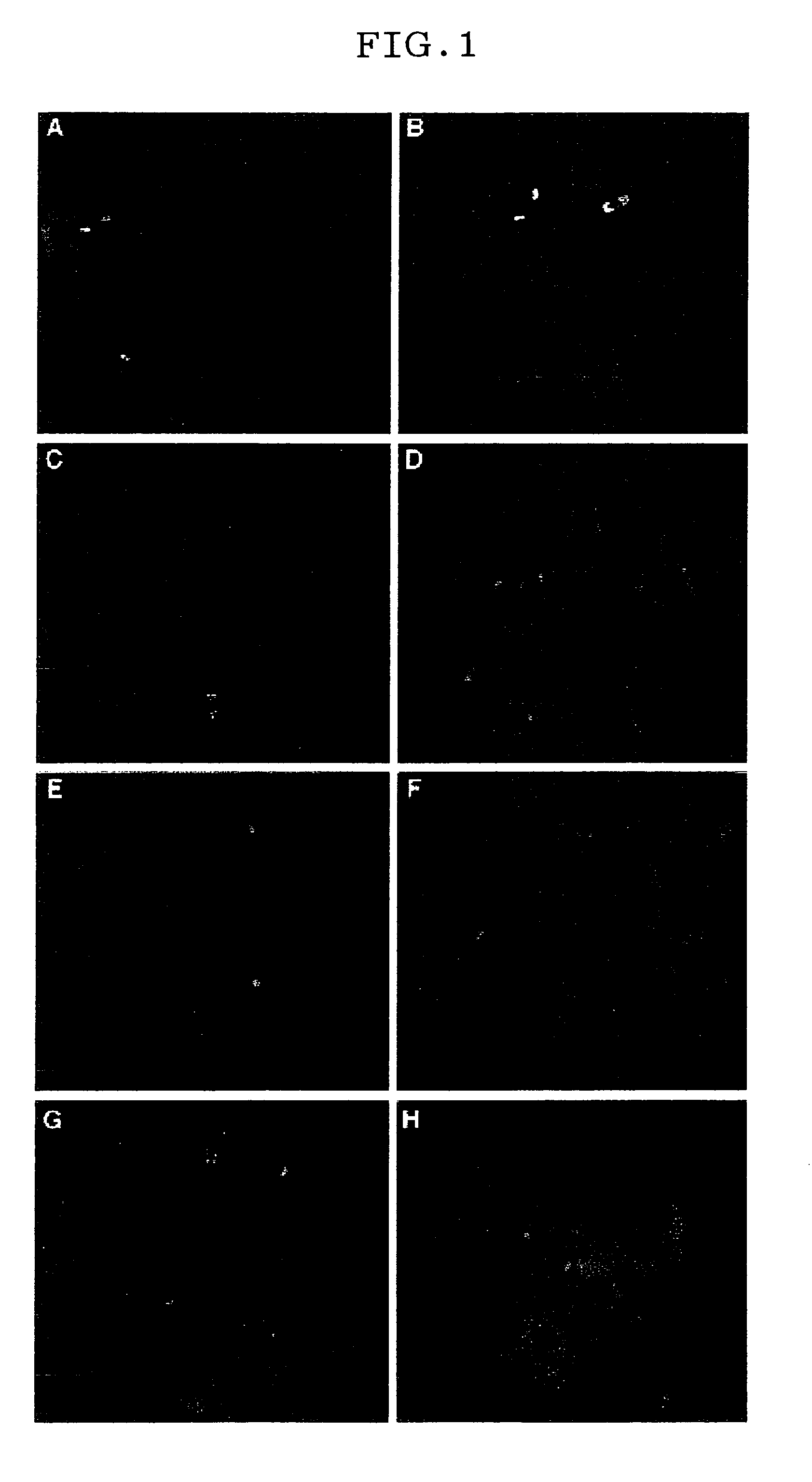Method of detecting cancer cell acquiring drug-resistance
a cancer cell and drug resistance technology, applied in the field of detecting cancer cells having acquired drug resistance to anticancer drugs, can solve the problems of serious side effects, significant drug problems, and insufficient detection of drug-resistant cells based on the drug
- Summary
- Abstract
- Description
- Claims
- Application Information
AI Technical Summary
Benefits of technology
Problems solved by technology
Method used
Image
Examples
example 1
Alternation in Specific Genomic DNA Region which is Specifically Recognized in Drug-Resistant Cancer Cells
[0063]The subtractive CGH method is a method, which comprises comparing the copy number of parent cell line genome with the copy number of each genomic regions of the drug-resistant cell induced from the parent cell line, followed by subtraction, so as to quantitatively calculate the degree of gene amplification and deletion. Using this method, alterations in gene amplification or deletion, which were found in 23 types of drug-resistant cancer cells when compared with the parent lines, are shown in Table 1.
TABLE 1Regions comprising chromosomal abnormality detected by applying subtractiveCGH method to the parent line cancer cell genome and drug-resistantcancer cell genome induced from the parent line cancer cellsNo.Cell lineDrug nameAmplified regionDeleted region1HT-29 / CPTCPT1q, 4q24-3511p, 11q23-25, 20p,20q2HT-29 / cDDPCDDP1q31-32, 1q42-44, 3p21-26,11p14-15, 15q11-215p14-153HT-29 / ...
example 2
Amplification of ABC Transporter Genes and Overexpression Thereof
[0065]To date, 48 types of human genes have been known as human genes encoding the ABC transporter (Dean, M., Hamon, Y. and Chimini, G.: The human ATP-binding cassette (ABC) transporter superfamily, J. Lipid Res., 42, 1007-1017, 2001). In the drug-resistant cells examined herein, 20 types of ABC transporter genes were amplified. Among such 20 types of ABC transporter genes, amplification of 17 types of genes was confirmed by the FISH method.
[0066]13 types of ABC transporter genes were reliably amplified in 19 types of drug-resistant cells, when compared with parent lines (Table 2).
TABLE 2Cell line list showing the results that when parent line cancer cells are comparedwith drug-resistant cancer cells induced from such parent line cancer cells, ABCtransporter genes and Bcl-2 family genes are amplified in the latter cells.LocalizedDNAGenechromosomalcopyFamilynameAlias nameregionBAC / PAC nameCell linenumber*ABCABCA316p13.3...
example 3
Amplification of Gene Encoding Anti-Apoptotic Protein Belonging to BCL2 Family and High Expression Thereof
[0068]A gene group consisting of the BCL2 gene, the BCL2L1 (BCLXL) gene, the BCL2L2 (BCLW) gene, the BCL2A1 gene, the MCL1 gene, and the BCL2L10 gene, belongs to a BCL2 family. These are genes encoding regulatory proteins having anti-apoptotic action (Gross, A., McDonnell, J. M., and Korsmeyers, S. J.: BCL-2 family members and the mitochondria in apoptosis, Genes Dev. 13, 1899-1911, 1999).
[0069]Gene amplification of 5 types of genes excluding the BCL2L1 (BCLXL) was observed in the drug resistant cells. In the analysis using FISH, when compared with each parent lines, amplification of the BCL2L2 gene took place in etoposide-resistant ovarian cancer (SKOV3 / VP) cells, amplification of the MCL1 gene took place in camtothecin-resistant colon cancer (HT-29 / CPT) cells, and amplification of the BCL2L10 gene took place in cytosine arabinoside-resistant leukemia (K562 / AC) cells (Table 2)....
PUM
| Property | Measurement | Unit |
|---|---|---|
| Electrical resistance | aaaaa | aaaaa |
| Frequency | aaaaa | aaaaa |
Abstract
Description
Claims
Application Information
 Login to View More
Login to View More - R&D
- Intellectual Property
- Life Sciences
- Materials
- Tech Scout
- Unparalleled Data Quality
- Higher Quality Content
- 60% Fewer Hallucinations
Browse by: Latest US Patents, China's latest patents, Technical Efficacy Thesaurus, Application Domain, Technology Topic, Popular Technical Reports.
© 2025 PatSnap. All rights reserved.Legal|Privacy policy|Modern Slavery Act Transparency Statement|Sitemap|About US| Contact US: help@patsnap.com



